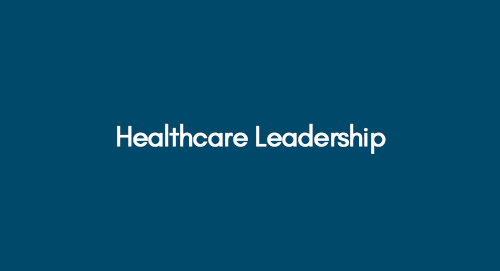
Impact of UK Tourism Industry on Promoting Cultural Heritage and National Economy
December 23, 2020
Architectural Design
December 23, 2020Chapter I- Introduction
Rapid changes in Health care environment are raising concerns for the availability of strong and functional health leaders. It is the need of time that health care leaders possess the qualities that can ensure successful and systematic delivery of a health system (Barsh et al., 2009). However in most of the countries there exist a leadership gap that is responsible for poor health system and in return poor patients care. Several factors are responsible for the development of these gaps. These may include lack of resources for building effective leadership, lack of motivation, gender differences in giving priorities to leaders and poor planning and improper vision while making investments for leadership programs in health care system (Bloom, 2010).
Problem Statement
As the demographics with the United States changes and the population becomes older, the healthcare system has not kept up with such changes. The number of minorities across the U.S. has increased significantly, but the role of minority leadership in our healthcare system has not reflected such change in healthcare systems and hospitals across the country. Today, approximately 47% of no-profit hospitals in the U.S did not have a single racial or ethnic minority on their governing board, and 90% of the board members were Caucasian. This is despite the fact that some incentives have been put in place for minority recruitment, many healthcare systems C-Suite does not reflect the community that it serves. IN 2012, only 14% of healthcare executive were minorities, and most hospitals does not rely on their diversity reports when recruiting (Fisher, 2015). Today, despite the rapid changes that are taking place in the U.S. system, most of the current leaders are trying to solve today’s problem with yesterday’s solution, and this strategy may not be sufficient to manage the deteriorating situation in the coming years.
This research will undertake several means to investigate the factors that are responsible for creating these gaps and how they are effecting the functioning of overall health care system of USA. In addition the research will also address the importance of effective leadership and its impact on the well-being of Health community as well as for the society as a whole. In addition the suggestions and recommendations will also be discussed in understanding the incorporation of several practices that can improve the quality and delivery of healthcare leadership.
Research Aims and Objectives
The research aim is to evaluate the factors responsible for leadership gap in Health care system. Aspects such as competency prioritization and change of vision and planning in filling this gap will also be addressed. In addition the purpose of the research is to help health practitioners and health departmental heads on how to address these issues and particularly what steps should be taken to improve the service of health care leaders in institutions. Keeping in mind the aims of the research the following objectives of the study are developed:
The objectives of the current study are:
- To address the importance of Leadership in Health care system
- To identify underlying factors responsible for leadership gap in Health sector
- To identify gender difference in Health care Leadership.
- To understand how changing Healthcare environment can affect the leadership practices
- To address vision and planning procedures involved in improving health care leadership
- To address steps or innovations taken by Government and Health agencies to develop skilled health care leaders.
- To help health practitioners and departments in developing strategies to minimize issues related to health care leadership and to enhance the performance/productivity.
Research Question
The research question which is the whole focus of this study is as follows:
How can the Leadership Gap be addressed in Healthcare sector of U.S in terms of competency prioritization, effectiveness, identification of the ever changing requirements, visionary planning? How various organizations develop sustainable leadership, and is there a need of evolving roles/competencies in healthcare leadership?
The answer to the above mentioned questions will be explained in detail keeping in view the aims and objectives defined through proper recommendations supported by the literature reviewed, the data collected and the results obtained in this research
Chapter: 2 Literature Review
Effective leadership practices are crucial for the success of any organization, and especially in Health care system based organization this subject gains more importance. Leaders are responsible for addressing problems strategically and according to the organizational climate (Schyve, 1991). Unfortunately the deliveries of Health care leaders have been considered to be not entirely satisfactory at various levels according to various researchers, and there exists several gaps in leadership that can affect their performance in health organizations. These include gender differences, motivational factors, lack of resources and many more.
Several researches in literature support that development and planning of carriers while female leaders are usually ignored by the Health care leaders (Bloom, 2010). This is major gap in healthcare system as there are only few women in top leadership position despite the fact that majority of the students in medical colleges and institutions are females.
Another important cause for leadership gap is the style of leadership in health care system. According to various researchers, dictating and focusing on “Tell and Sell” principle is also resulting in poor delivery of health services. Collaborative leadership should be encouraged in which all the members should be engaged in solving an issue. The stakeholders as well as the government should take account for such actions that break the system barriers in successful achievement of leadership goals. To strengthen the Health care systems it is important to incorporate Leadership skills that help to coordinate the resources and stakeholders interest in achieving the desired health care impact (Goldberg & Eileen, 2006).
According to Leadership Academy (2013), the concept of advance leadership in health care is cyclic process where the goal is placed in a center and the actions that should be taken are arranged around it. The activities involving vision, policy developments, system structural enhancements, process optimizations, research and development, customer care etc. are formulated and directed by the leadership as well as the management, which will eventually define the future of healthcare in the years come. Therefore, it absolutely pivotal that the Health care leaders address these parameter to initiate change for filling the gap.
The literature review section of this research will cover all the aspects of health care leadership including understanding and importance of the concept. In this section all the potential causes of leadership gap and how health care leaders can solve them will be discussed. In short the literature review will address the topic of health care leadership, with the focus on the following key areas;
- Hospital Leadership Trends in US
- Building a Leadership Team for the Health Care Organization of the Future
- Health Reform: Filling Leadership Gaps in Health Systems
- Health Care Leadership Skills
- Leadership and Health Care Reform
- Types of Leadership that is necessary to reform Healthcare
Chapter: 3 Methodology
The research methodology of this research is based on descriptive methods which involves accumulation of various key philosophies on one stage. Hence for the first part of this research, secondary data will be collected for properly evaluating the Leadership in healthcare sector in terms of competency prioritization, effectiveness and their identification of the ever changing requirements. The information and theories presenting all these variables will be collected from journal articles, online databases and published industry reports.
In the second part of this research, the primary data including qualitative and quantitative data in the form of surveys and interviews will be collected from the practitioners, patients as well as the management associated with the healthcare care sector of the USA. The main elements which will be considered for drafting the questionnaire and interviews from including the top health managers are as follows:
- The demographics sample such as age, gender, position, experience etc.
- The participation of individuals in leadership developmental programs over the last two to three years.
- Identifying the industry standards for measuring the leadership competencies that will be beneficial for the health care sector.
- Gauging the most significant factor for nurturing future leaders of the health industry.
- Recognizing significant institutes, coaching centers or colleges which are offering leadership developmental programs pertaining to health care sectors.
The analysis tools used for quantitative data collected from survey will SPSS or similar tools, and the findings of the data will be discussed in detail with the results and discussion section of the paper. The interviews data collected will be analyzed for representing the important subjects for further discussion. The issues of reliability and legitimacy will also be discussed along with ethical concerns.
Chapter: 4 Research Findings and Discussion
This chapter includes the detailed analysis of survey and the interviews conducted with the assistance of chosen statistical tool and analysis technique. The results of both survey and interviews will be discussed through supporting reviewed literature.
Chapter: 5 Conclusions
This chapter includes the conclusion and recommendations in order to answer the research questions in view of the analyzed data. Further this part will also include future implications and limitations of this study.
References
Aud, S. et al., 2011. The Condition of Education 2011. (NCES 2011-033). US Department of Education, National Center for Education Statistics., pp.Washington DC: US Government.
Barsh, J., Cranston, S. & Lewis, G., 2009. How Remarkable Women Lead: The Breakthrough Model for Work and Life.. New York: Crown Business: Random House.
Barsh, J. & Yee, L., 2012. Unlocking the Full Potential of Women at Work. [Online] Available at: http://www.mckinsey.com/client_service/organization/latest_thinking/women_at_work. [Accessed 9 December 2015].
Bloom, B., 2010. Health Reform: Filling Leadership Gaps in Health Systems An Overview of Ideas from the Harvard University Advanced Leadership Initiative Think Tank. [Online] Available at: http://advancedleadership.harvard.edu/files/ali/files/health_reform_filling_leadership_gaps_in_health_systems.pdf [Accessed 8 December 2015].
Desvaux, G., Devillard-Hoellinger, S. & Meaney, M.C., 2008. A Business Case for Women. McKinsey Quarterly. .
Fisher, N. (2015). Surprising Hospital Leadership Trends. Forbes.
Goldberg, R. & Eileen, 2006. Opinions: The Leadership Gap in Healthcare - The True Deficit. Healthcare Quarterly.
Kathryn J. McDonagh, P.B., Hoss, M.A.K., Paris, N.M. & Schulte, M., 2014. The Leadership Gap: Ensuring Effective Healthcare Leadership Requires Inclusion of Women at the Top. Open Journal of Leadership, 3, pp.20-29.
LeadershipAcademy, 2013. Healthcare Leadership Model The nine dimensions of leadership behaviour. [Online] Available at: http://www.leadershipacademy.nhs.uk/wp-content/uploads/dlm_uploads/2014/10/NHSLeadership-LeadershipModel-colour.pdf [Accessed 8 December 2015].
Oliver, S., 2006. Professional issue Leadership in health care. [Online] Available at: http://susanoliver.com/pdf/my%20leadership.full%20text.pdf%2006.pdf [Accessed 9 December 2015].
Schyve, P. M. (1991). Standards, measurement, and continuous quality improvement: The joint commission perspective. Journal of Oral and Maxillofacial Surgery, 3-4.
Get 3+ Free Dissertation Topics within 24 hours?


























